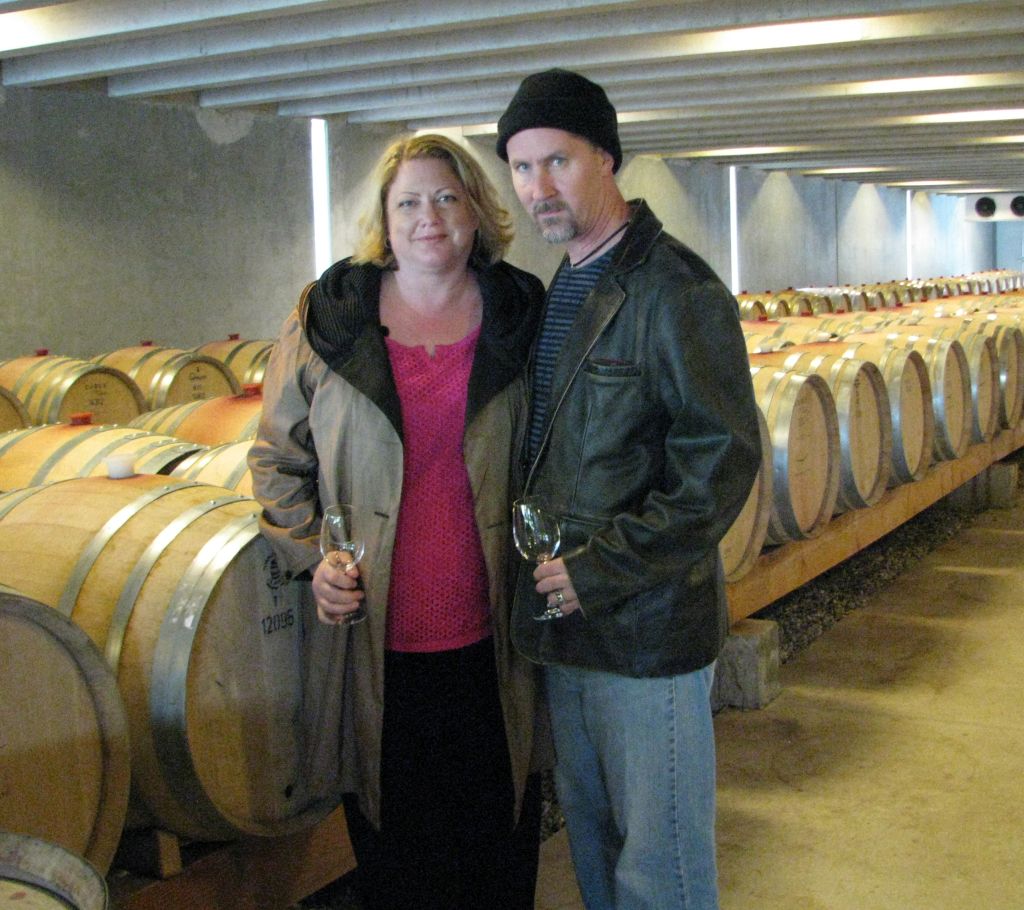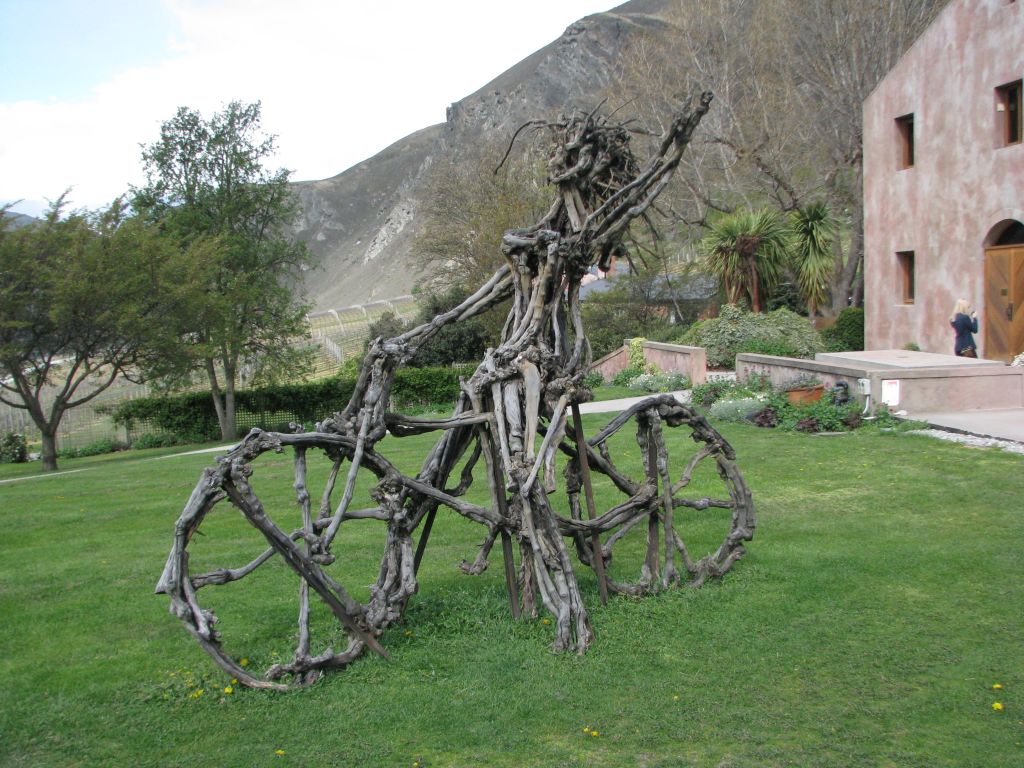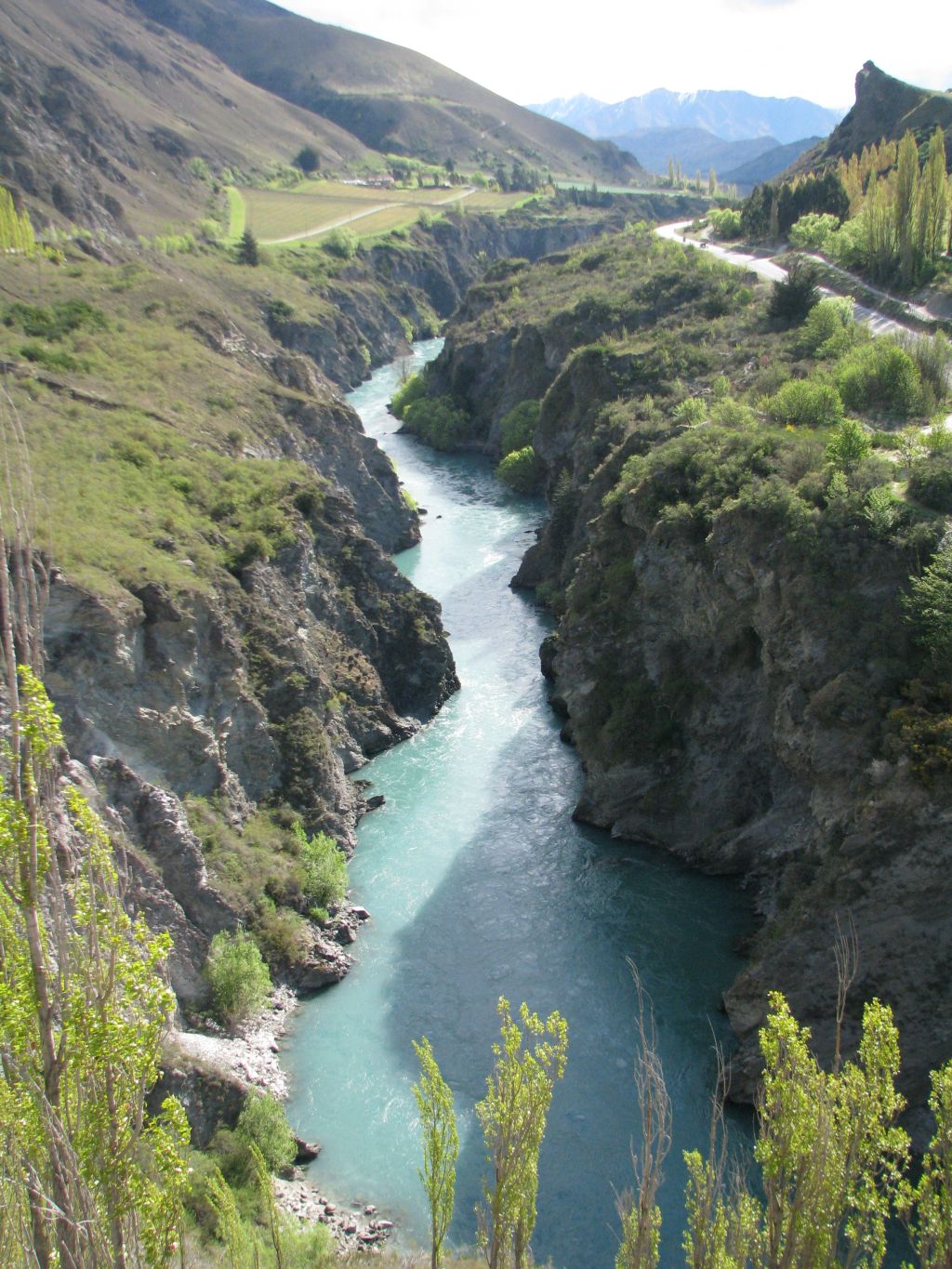
Day 4: Guided wine tour of the Otago Region
|
We have never used a tour
service when we have visited wine regions. We prefer
the "Drink-and-Drive" method where we rent a car and
visit the wineries that we want to visit. If your
intention is to drink lots of wine and have a good
time, tour services are for you. If you need to keep the wits that allow the ability to
distinguish between turds and gems, avoid the tours.
Otherwise, you will most likely spend the day visiting
wineries that pay the tour companies the most to bring
tour groups but make turds. I'm sure that not all tour
companies follow this business model but it isn't
worth taking the chance when you only have a day or
two to visit a wine region. We are somewhere in the
middle but still prefer to do our own research on
where to go rather than risk taking a tour. However, having arrived in Queenstown with serious jet lag and not wanting to brave the Otago region on the left-side of the road, we made an exception to our policy and asked Bevin, our host at The Dairy, to arrange a tour for us. We started the day with the breakfast part of Bed & Breakfast. Alex, a UK native (not a Kiwi), made us what would turn out to be the best breakfast that we had during the whole trip. At noon, the "Wine Bus" pulled up to the hotel. Paul, our tour guide, was one of the few Kiwis that we encountered, having lived in NZ his whole life. He appeared to be very knowledgeable about the Otago region, local history, and the wines that the various vineyards made. The other two couples in the tour were Nicole and Ryan from Orange County, CA on their honeymoon, and Peter and Elise from Brisbane, Australia on their 1-year anniversary. Normally when we go on holiday to wine country, we of course go to enjoy the region but also to identify exceptional wines that we want to add to our collection. Sometimes this means buying some wine while at the tasting room to be sent home, sometimes actually joining their “wine club” to have wines sent regularly, sometimes both. In California or Oregon, this isn’t a big deal because they are close to home and shipping costs are cheap. Amongst our criteria for quality is to identify the top 15%. The problem with visiting a wine region as far from home as New Zealand is that the cost of shipping the wine exceeds the cost of the wine, itself. On this trip we expect to tighten our criteria to buy only the exceptional, top 5%. Wine varietals throughout New Zealand’s wine country are known for specific varietals depending upon the region. In the Otago region where Queenstown is, Pinot Noir is the favorite. Further north toward Marlborough, Sauvignon Blanc is the rage. We didn’t know what to expect so we tried to maintain the objectivity of our palates. Although the wines that we tried at the places that we visited in Otago were good, the Pinot Noirs that we tried didn’t quite hit our “exceptional” criteria. We are used to the bolder, fruitier Pinot Noirs that we found in Oregon. The Pinots that we tried in Otago were okay but lacked the kick that we look for. Our first stop on the tour was to Peregrine Vineyards. Although the Pinot Noirs were good, they weren’t exceptional. However, there were two others that were. Lorna’s favorite was a 2014 Pinot Gris and my favorite was a 2010 dry Riesling. They also had an outstanding Chardonnay and Sauvignon Blanc. Surprisingly, Peregrine had an arrangement with Whole Foods so I made a note to check back home with them to fine whether they carried any of the ones that we liked. |

|
Our second stop was Carrick
where we had a communal lunch. We didn’t do a typical
wine tasting as we did at the other locations but did
choose a wine from the menu to drink during lunch. I
had a Pinot Noir, which was very good but not
exceptional. After lunch, we headed out to the next stop. Very windy roads and stuffiness in the bus made me queasy, which exacerbated a persistent earache. The stop at a recreated mining town in Cromwell was welcome for the fresh air. The town was actually a row of shops made up to resemble the old mining town. The original mining town was further down the shore, actually underwater now that dam works had flooded the valley years prior. Our third stop was at Aurum. I asked our tour guide Paul what his criteria was for selecting the vineyards for the tour and he said that they changed depending upon seasonal availability and other factors (Big, medium, small, variety of wine makers, changing up to avoid giving too much business to a particular vineyard, etc.). I couldn’t tell what was so special about Aurum because there wasn’t anything special about it besides the smell of children (the badly in need of a bath variety, not the euphoric baby smell). The tasting room was in an extension of the family’s actual home, which may have explained the bouquet. The wines, which highlighted Pinot Noir, weren’t even close to being exceptional. I think that my carsickness and earache may have had something to do with my mood but Lorna wasn’t similarly affected and agreed with my appraisal of the wines. Our last stop was at Chard Farm. I think that I was in the wrong frame of mind for tasting wines due to the earache and car sickness so I didn’t care for anything that I tried. Although they highlighted Chardonnay and Pinot Noir, Lorna liked the Gewurztraminer. Not exceptional, but interesting: dry and minerally, unlike most Gewurztraminers that we have tasted. There were a couple of highlights about Chard Farm that were worthy of photographic evidence. Someone built a bicyclist with dead Chardonnay vines, which the entitled “Lola”. It reminded me of Queen’s song “Fat-bottomed Girls”. |

|
Another
moment that required photographic evidence occurred
during the drive out from Chard Farm. The river that
runs past the vineyard was used during the filming
of the Lord of the Rings. At some point, Orlando
Bloom pulled a dwarf double out of the river during
one of the river scenes. This was the river from
that part of the movie, although I don’t recognize
it.
|

|
We returned to the hotel, recharged a bit and went out for supper at Jarvois, just down the hill from the hotel. As with other places that we had visited, the place was staffed by foreigners on work visas. Another thing we learned about work visas is that there is an age limit of 35 unless the applicant has a particular skill that the Kiwis need or can find a Kiwi to sponsor them. In Queenstown, there isn’t much need for skills other than working shops and restaurants during tourist seasons. The Kiwis evidently don’t want these jobs, hence the large workforce of young foreigners. It didn’t matter much to us though; the foreigners were just as friendly as the Kiwis. Afterward, we wandered into town to visit Bardeax one last time for wine. Beatrice was tending bar that evening and told us that her favorite place for Pinot Noir in the Otago region was Gibbston Valley so we made plans for a visit there on our way out of town. Day 5: Drive to Franz Josef Glacier .. Back to Index |